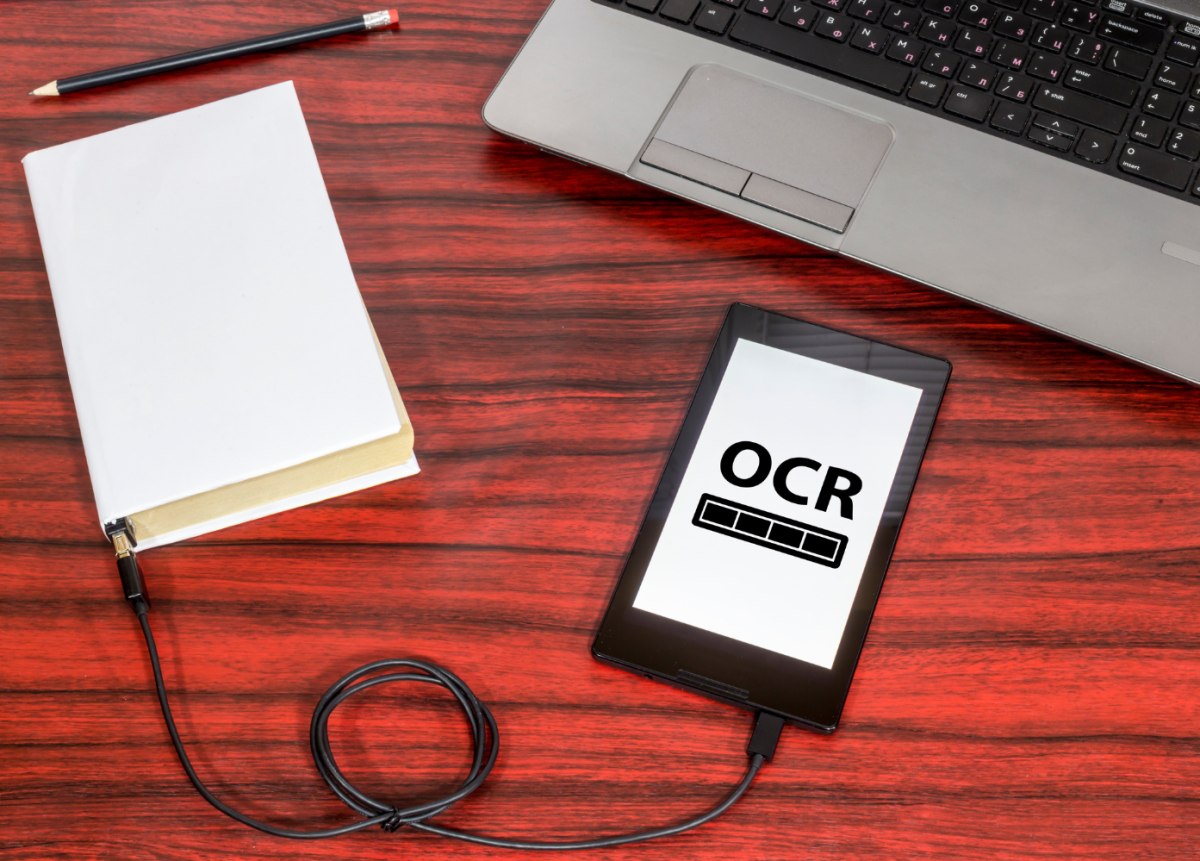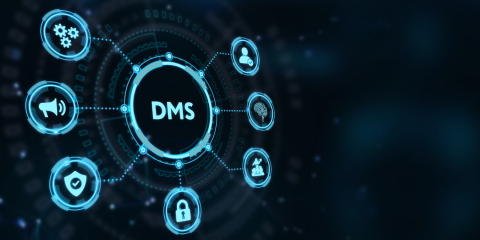OCR: What is Optical Character Recognition and how does it work?

OCR, short for Optical Character Recognition, is an advanced technology that significantly optimises and automates your workflow. In this article, you will find out exactly how this technology works, what the beneifits are and how you can use it.
What is OCR (Optical Character Recognition)?
OCR stands for Optical Character Recognition. It is an advanced data capture technology that enables computers to recognise printed or handwritten text and convert it into machine-readable text or in other words, data.
Organisations can use OCR to automatically extract and process text from scanned documents and PDF files. As a result, this technology has a wide range of applications and benefits.
In addition to ICR (Intelligent Character Recognition), IDP (Intelligent Document Processing), IDR (Intelligent Document Recognition), OMR (Optical Mark Recognition), web scraping or smart cards, OCR is another efficient method of automatic data capture. Click here to find out more about automatic data capture and its various methods.
Optical character recognition is often used where large amounts of similar data are generated, such as in the healthcare, insurance and financial sectors. OCR is often complemented by ICR, IDP or OMR solutions.
OCR is not only used in document management, but also in everyday life. For example, it automatically reads postcodes on letters or licence plates on radar images.
The technology behind OCR - how does it work?
The functionality of OCR is complex and involves several steps:
- Image capture: The process starts with creating an image or scan of the text to be recognised. This can be done using cameras, smartphones, scanners or other image sources.
- Pre-processing: The captured image is pre-processed to optimise contrast, facilitate text recognition and improve the legibility of the text. This step includes skew correction, despeckle, brightness and contrast adjustments in order to improve the accuracy of subsequent steps and the overall data extraction. The OCR software automatically looks for errors and corrects them:
- Alignment: The image is straightened and the angle is corrected.
- Binarisation: Converts the image to black and white for more accurate separation of text and background.
- Layout analysis/Zoning: Identifies columns, rows, headings, paragraphs, tables and other elements.
- Normalisation: The intensity values of the pixels in the image are adjusted to the average values of the surrounding pixels.
- Segmentation: The image is then divided into individual characters or blocks of text, usually lines, words or letters, to isolate them and focus recognition on smaller areas to increase accuracy.
- Character Recognition/Pattern recognition: In this step, OCR pattern recognition algorithms analyse the individual segments for patterns, shapes and structures to identify individual characters such as letters and words. For example, the size, height, shape and lines of a character are compared to those in the existing library. Advanced systems use machine learning techniques to improve accuracy, even with different fonts and handwriting.
- Text recognition: Based on the recognised patterns, the text is extracted and converted into machine-readable text, i.e. a digital text format. This step is critical to the quality of the results. Sophisticated OCR systems can handle complex layouts, multiple languages and even cursive handwriting.
- Post-processing: Finally, the recognised text is processed to correct any errors and refine the results. Post-processing includes error correction algorithms, spell checking, adjusting text formatting, contextual analysis and sometimes human review to ensure maximum accuracy.
 X
X
How to use OCR
OCR technology can be used in various ways:
- Online OCR services: Many online OCR services allow you to upload images and download the recognised text. Examples include Google Drive OCR and Online-OCR.net.
- OCR software: There are a lot of OCR software applications that run on different operating systems such as Windows, MacOS and Linux. Examples include Adobe Acrobat, ABBYY FineReader and Tesseract OCR for developers.
- Programming: As a Salesforce developer, you can integrate OCR into your applications using specialised OCR libraries and APIs. This enables automated text recognition and processing within your applications.
REEDR, for example, is an effective OCR solution for your Salesforce CRM. This can be easily implemented by our team if you are looking for suitable and efficient software. Our solution can be used to convert images into text, for instance, which can then be imported into your Salesforce CRM. So with REEDR you can connect directly to Salesforce to import data.
Benefits of OCR
The benefits of OCR are numerous:
- Text recognition and digitisation: OCR enables fast and accurate conversion of printed or paper-based documents into electronic text files and digital data, making it easier to store, search, process and edit information.
- Increased productivity and efficiency: By automating time-consuming tasks such as manual data entry, OCR technology significantly reduces manual labour, minimises errors and speeds up processes.
- Accessibility: OCR plays an important role in improving accessibility. By converting printed material into digital text or speech, OCR supports the creation of audio formats and Braille, helping people with visual impairments.
- Document management: Organisations can use OCR to digitise and organise large volumes of physical documents, simplifying document management, archiving and access to information.
- Compliance and security: Digital data is easier to secure and track, making it easier to comply with data protection regulations.
Find out more about the benefits of OCR here.
Conclusion
So Optical Character Recognition (OCR) is a versatile technology with many applications. Its benefits range from text recognition and digitisation to accessibility and document management. The technology behind OCR is complex and relies on specialised algorithms as well as pattern recognition techniques. By using OCR software, online services or integrating it into your own applications, you can take advantage of the numerous benefits of this technology.
With REEDR you get an efficient OCR software solution for automated, accurate and fast data capture.
Do you have any questions or are you interested in receiving more information? Would you like to find out more about our OCR solution REEDR for your Salesforce CRM? Then don't hesitate to contact us directly here.



